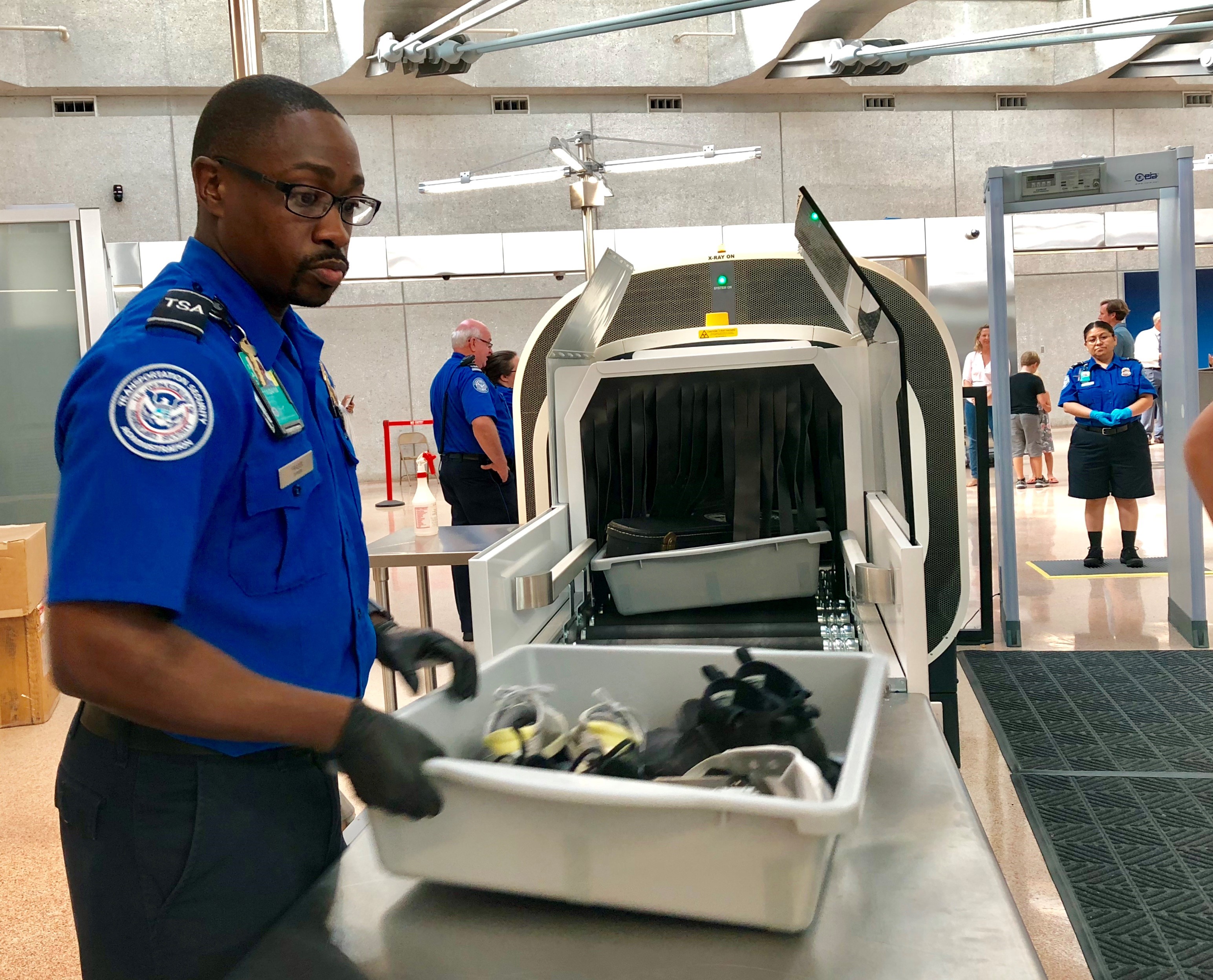
DULLES, Va. — It has been the busiest summer travel season in years including some record-setting days in terms of the number of travelers passing through Transportation Security Administration checkpoints nationwide. TSA already set a record for the busiest day in its history when 2,795,014 passengers and crew members were screened at airports nationwide on Sunday, July 7.
With Labor Day Weekend marking the end of the summer travel season, TSA officers will continue to focus on providing efficient security. Travelers can help ensure a smooth checkpoint experience by coming to the airport prepared for security screening.
To facilitate the security screening process, travelers should arrive early to the airport. It is recommended that travelers arrive two hours prior to a domestic flight and three hours prior to an international flight. Arriving early ensures travelers have ample time to account for traffic, parking and navigating through the airport. It is advisable to check-in for a flight ahead of time, either on the air carrier’s website or mobile app, to allow even more time to get through security and relax at the gate.
Part of security preparedness is knowing why TSA has certain protocols in place.
It is helpful to wear slip-on shoes so that they can be easily slipped off prior to going through the checkpoint scanner and slipped back on afterward. TSA’s protocols require that passengers remove their shoes to be X-ray screened because in 2001 a terrorist attempted to detonate an explosive device in his shoes. Thus, shoes come off to allow TSA’s technology to identify whether there is an explosive device concealed inside someone’s shoes.
TSA requires travelers to place large liquids, gels, creams and aerosols, into checked bags such as shampoo, conditioner, suntan lotion, shaving cream and anti-perspirant. If you’ve only got a carry-on bag, make sure all of your liquids follow the 3-1-1 rule, which limits the size of liquids, gels, aerosols, creams and pastes to 3.4 ounces or less and have all of those bottles fit in a single quart size plastic bag and placed in a bin for screening. This includes sun block and tanning sprays for travelers headed to sunny locations. TSA’s protocol limits the size of liquids in carry-on bags because in 2009, a terrorist plot to detonate larger quantities of liquid explosives carried on board aircraft was thwarted, just a few weeks before the plot was launched, resulting in the limit on the amount of liquids allowed to be carried onto airplanes.
Travelers should be ready to remove laptops and personal electronic devices larger than a cell phone from carry-on bags. Why? Because TSA is aware that terrorists have the technical capability to artfully conceal explosive devices inside electronics. Removing laptops and electronic devices and placing them in a checkpoint bin with nothing above or below each item, allows TSA to get a clear X-ray image of those items to help ensure that nothing dangerous has been artfully concealed inside these items.
It is important to avoid packing prohibited items in baggage when flying if travelers expect a smooth security checkpoint experience. TSA has tools that travelers can use to help ensure that passengers aren’t bringing prohibited items to the airport.
The best way to ensure that you know what can be packed in a carry-on bag, checked bag, either or neither is through any of these four options:
- Tweet or Message AskTSA. Unsure if an item is allowed through security? Issues receiving TSA Pre✓® on your boarding pass? Get live assistance by tweeting your questions and comments to @AskTSA or via Facebook Messenger on weekdays from 8 a.m. to 10 p.m. and on weekends/holidays from 9 a.m. to 7 p.m.
- TSA’s homepage has a tool in the upper right-hand corner entitled “What Can I Bring?” in which travelers can type in the name of an item to find out if it is allowed in a checked or carry-on bag.
- Download TSA’s free app. The MyTSA app has the handy “What Can I bring?” tool at the tip of your fingers.
- The TSA Contact Center is available to answer questions by email and phone at 1-866-289-9673. Staff is available from 8 a.m. to 11 p.m. weekdays and 9 a.m. to 8 p.m. weekends/holidays; an automated service is available 24 hours a day, seven days a week.
Additional helpful travel tips for the airport security checkpoint include:
- Start with an empty bag when packing for the airport. This can mean a suitcase, roller bag, knapsack, messenger bag, briefcase or purse. This ensures that you haven’t forgotten that you had an item in the bottom of your carry-on bag.
- Be ready when you enter the checkpoint line: Checkpoint lines are an ideal time to remove all items from your pockets and put them into one of your carry-on bags so you won’t lose them. It’s also the time to get your ID and boarding pass out of your wallet and ready to hand to the TSA officer. (Don’t forget to get your REAL ID-compliant license before October 2020.)
- Once you get to the divesting tables, be ready to remove laptops, any electronics larger than a cell phone and the 3-1-1 compliant liquids bag from carry-on baggage and place those items in a checkpoint bin with nothing above or underneath them.
- Let the TSA officer know right away if you’re traveling with larger quantities of medically necessary liquid medications, or breast milk or formula for an infant as those can be screened separately.
- Consider minimizing items that you wear to the airport such as bulky jewelry, scarves, hair accessories, large belts and other bulky items as these articles are likely to require additional screening.
